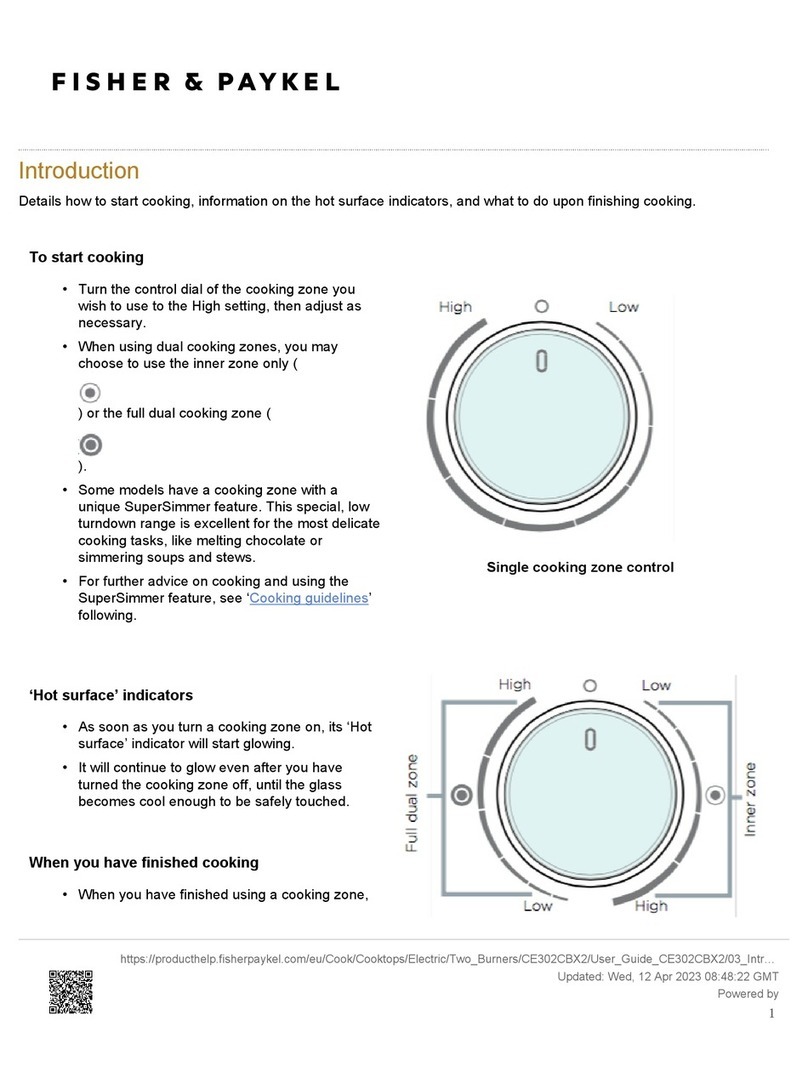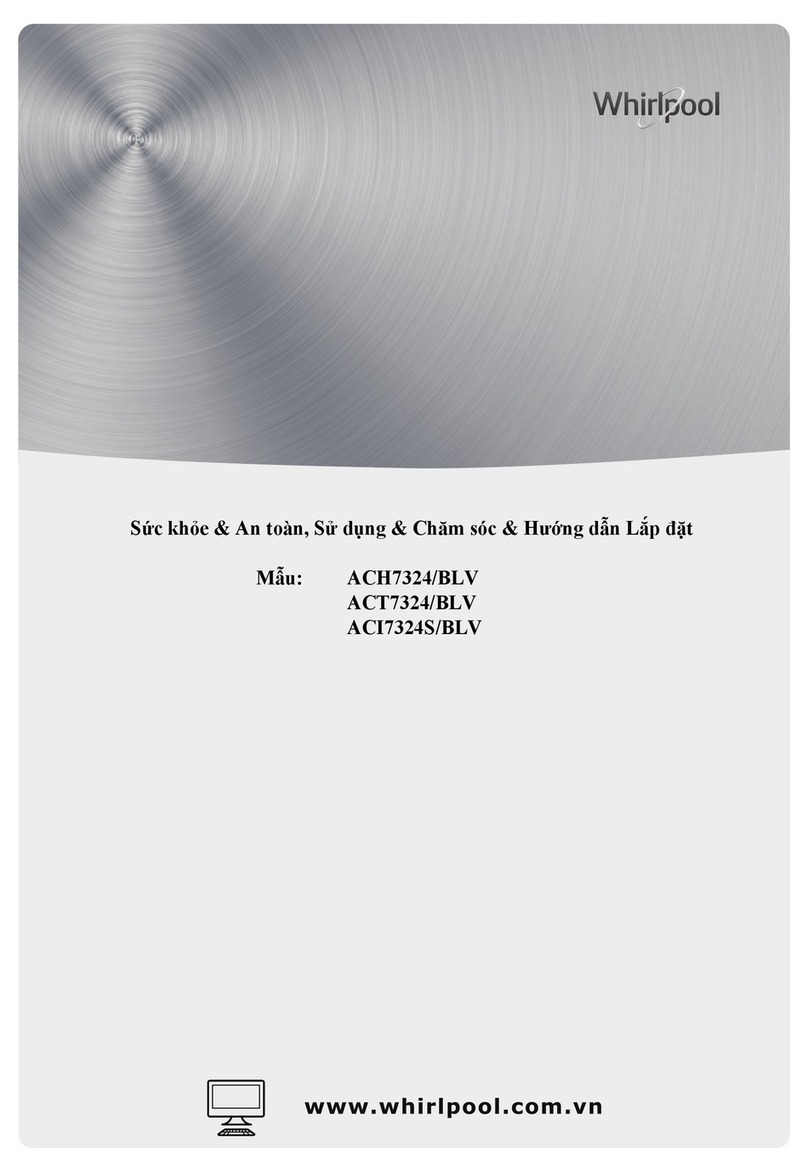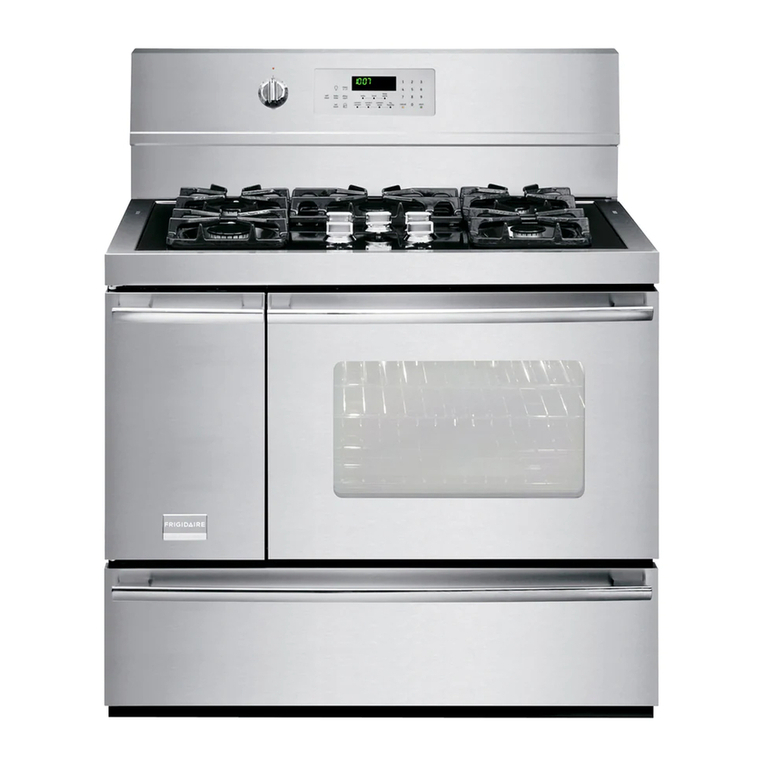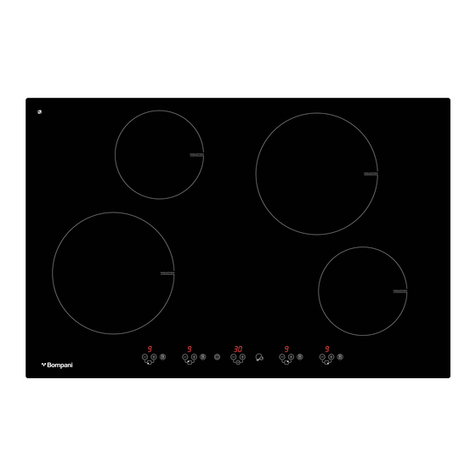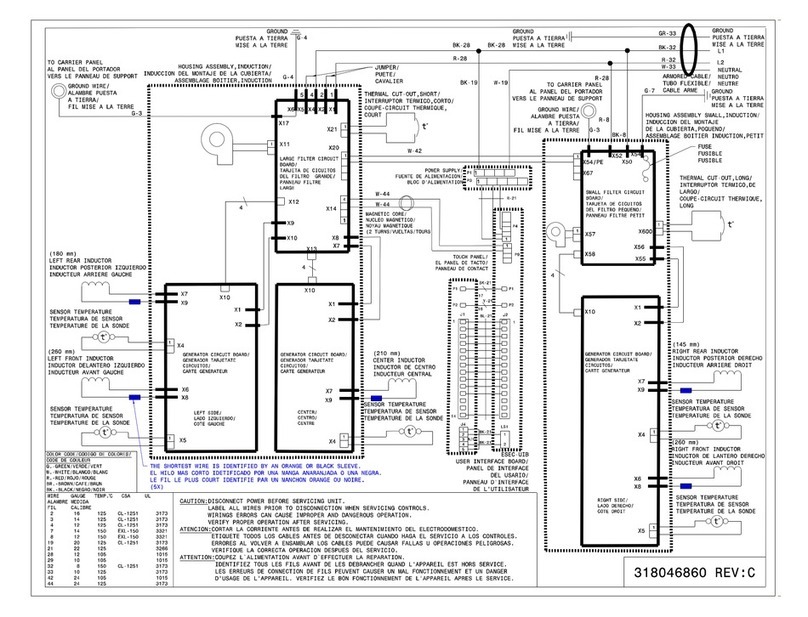
3
ISTRUZIONI PER L’UTENTE
È necessario che tutte le operazioni relative all’installazione, alla regolazione,
all’adattamento al tipo gas disponibile, vengano eseguite da personale qualificato,
secondo le norme in vigore.
Le istruzioni specifiche sono descritte nella parte del libretto riservate
all’installatore.
USO DEI BRUCIATORI
La simbologia serigrafata a lato delle manopole,
indica la corrispondenza tra manopola e
bruciatore.
Accensione automatica senza valvolatura
Ruotare in senso antiorario la manopola
corrispondente fino alla posizione di massimo
(fiamma grande fig. 1) e premere la manopola.
Accensione automatica con valvolatura
Ruotare in senso antiorario la manopola
corrispondente fino alla posizione di massimo
(fiamma grande fig. 1) e premere la manopola.
Ad accensione avvenuta mantenere premuta la
manopola per circa 6 secondi.
Uso dei bruciatori
Per ottenere il massimo della resa senza spreco
di gas è importante che il diametro della pentola
sia adeguato alla potenzialità del bruciatore (vedi
tabella seguente), in modo da evitare che la
fiamma esca dal fondo della pentola (fig.2).
Utilizzare la portata massima per portare
rapidamente in ebollizzione i liquidi e quella ridotta
per riscaldare le vivande o per il mantenimento
dell’ebollizione.
Tutte le posizioni di funzionamento devono essere
scelte tra quelle di massimo e quella di minimo,
mai tra la posizione di massimo e il punto di
chiusura.
Per interrompere l’alimentazione gas, ruotare
la manopola in senso orario sulla posizione di
chiusura.
In mancanza di energia elettrica è possibile
accendere i bruciatori con i fiammiferi posizionando
la manopola al punto di accensione (fiamma
grande fig. 1).
Bruciatori Potenze (W) Ø Pentole
Ausiliario 1000 10 - 14 cm
Semirapido 1750 16 - 18 cm
Rapido 3000 20 - 22 cm
Tripla Corona 3800 22 - 24 cm
Avvertenze
- Controllare sempre che le manopole siano
nella posizione di chiuso (vedi fig.1) quando
l’apparecchiatura non è in funzione.
- In caso di spegnimento accidentale della fiamma,
la valvola di sicurezza, dopo qualche secondo,
interromperà automaticamente l’erogazione del
gas. Per ripristinare il funzionamento riportare la
manopola al punto di accensione (fiamma grande
fig. 1) e premere.
- Durante la cottura con grassi o olii, porre
la massima attenzione in quanto gli stessi,
surriscaldandosi, possono infiammarsi.
- Non utilizzare spray vicino all’apparecchio in
funzione.
- Non devono essere poste sul bruciatore pentole
instabili o deformate per evitare incidenti di
rovesciamento o trabocco.
- Assicurarsi che le maniglie delle pentole siano
posizionate correttamente.
- Quando si accende il bruciatore controllare che
la fiamma sia regolare, abbassare sempre la
fiamma o spegnerla prima di togliere le pentole.
PULIZIA
Prima di ogni operazione scollegare l’apparecchio
dalla rete di alimentazione elettrica. Non utilizzare
pulitori a vapore per la pulizia dell’apparecchio.
Si consiglia di operare ad apparecchio freddo.
Parti smaltate
Le parti smaltate devono essere lavate con una
spugna ed acqua saponata o con detersivo
leggero.
Non usare prodotti abrasivi o corrosivi.
Evitate che sostanze come succo di limone,
pomodoro, acqua salina, aceto, caffè e latte
rimangano a lungo sulle superfici smaltate.
Parti in acciaio inox
L’acciaio inox può rimanere macchiato se lasciato
a contatto per lungo tempo con acqua calcarea o
detergenti aggressivi.
Si consiglia di lavare con acqua saponata e
asciugare con panno morbido.
La lucentezza viene mantenuta mediante l’uso
periodico di prodotti chimici idonei, reperibili in
commercio.
Bruciatori e griglie
Questi pezzi possono essere tolti per facilitare la
pulizia.
I bruciatori devono essere lavati con una spugna
ed acqua saponata o con detersivo leggero,
ben asciugati e rimessi perfettamente nel loro
alloggiamento.
Controllare che i canali spartifiamma non siano
ostruiti.
Verificare che la sonda della valvola di sicurezza
e l’elettrodo di accensione siano sempre ben puliti
per garantire un funzionamento ottimale.
Rubinetti a gas
L’eventuale lubrificazione dei rubinetti deve essere
eseguita esclusivamente da personale
specializzato.
In caso di indurimento o di anomalie di
funzionamento dei rubinetti gas chiamare il
Servizio di Assistenza.
